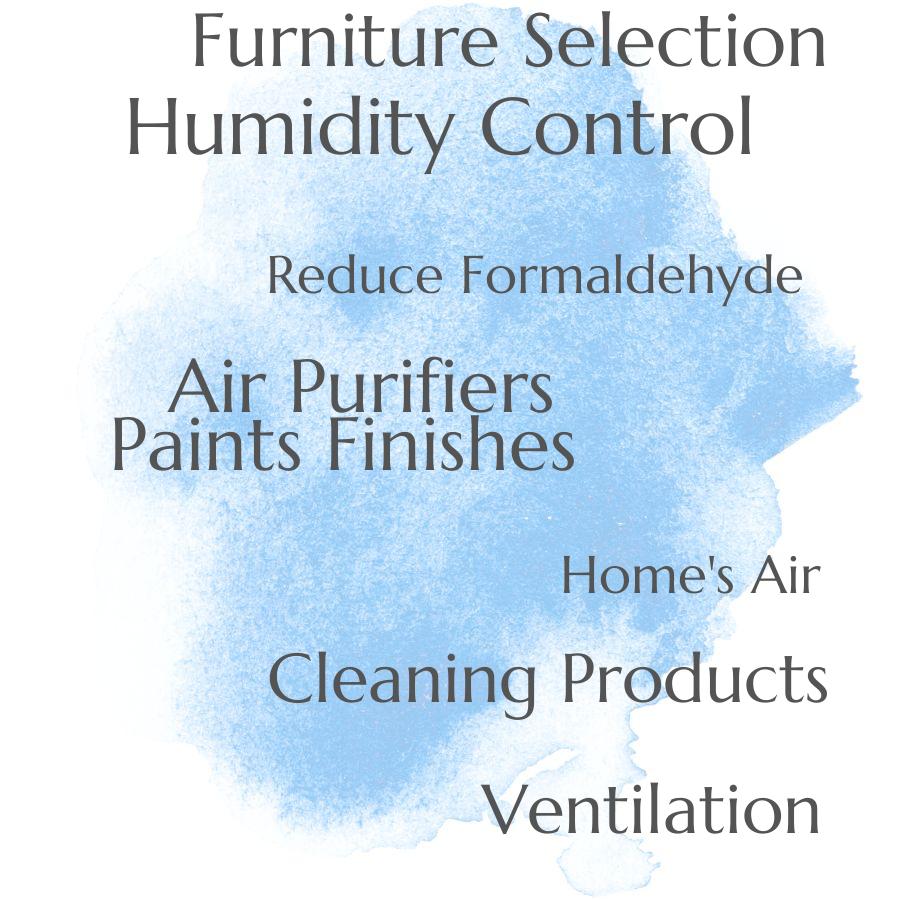There are several ways to reduce the amount of formaldehyde in your home’s air, such as using an air purifier, regularly changing your air filters, increasing ventilation by opening windows and doors, avoiding pressed wood products and synthetic fabrics, and using non-toxic cleaning products.
Formaldehyde is a common indoor air pollutant that can cause health issues, so it’s important to make sure your home’s air is free from this chemical. Fortunately, there are several ways to reduce the amount of formaldehyde in your home’s air.
In this blog post, we’ll discuss some of the most effective methods for reducing formaldehyde in your home. 1.
Increase Ventilation: One of the best ways to reduce formaldehyde levels in your home is by increasing ventilation and airflow throughout the house. Opening windows and doors regularly can help draw out chemical vapors and other pollutants from inside the house while allowing fresh air to enter.
Using exhaust fans or range hoods when cooking can help remove additional airborne pollutants like smoke or steam that may contain formaldehyde particles. 2.
Use Low-VOC Products: Another way to reduce formaldehyde levels in your home is by using low-VOC products such as paints, sealants, and adhesives whenever possible during renovations or redecorating projects. VOC stands for volatile organic compounds which are chemicals that evaporate easily into the air at room temperature and often contain high levels of formaldehyde particles as well as other toxins like benzene or acetone which can be harmful if inh
Ventilation

Ventilation works by introducing fresh air from outside into the indoor environment, which helps dilute and disperse any formaldehyde that may be present. This can be done through natural ventilation, such as opening windows or using fans to draw in outdoor air, or through mechanical ventilation systems like exhaust fans and HVAC systems.
It is important to ensure that any combustion appliances are properly vented so that they do not release formaldehyde into the home’s air. By increasing ventilation in your home, you can help reduce levels of formaldehyde and improve indoor air quality overall.
Air Purifiers
An air purifier works by drawing in contaminated air, filtering out pollutants and other airborne particles, and then releasing clean, fresh air back into the room. Air purifiers can be used to remove a variety of contaminants from the air including dust mites, pet dander, mold spores, pollen, smoke particles and even formaldehyde.
The best type of filter for removing formaldehyde is an activated carbon filter which has been specifically designed to absorb this chemical compound. When using an air purifier with an activated carbon filter it is important to regularly replace the filters as they become saturated with pollutants over time.
You should also ensure that your home is well ventilated so that any new sources of formaldehyde can be quickly removed from the indoor environment.
Furniture Selection
Formaldehyde is a chemical commonly used to make furniture, and it can be released into the air over time. To reduce formaldehyde levels, homeowners should choose furniture made with low-emitting materials such as solid wood or metal.
They should look for products that are certified by organizations like Greenguard or EcoLabel to ensure that they meet certain standards for low emissions. Homeowners should avoid buying secondhand furniture since it may contain higher levels of formaldehyde due to age and wear and tear.
Cleaning Products
Formaldehyde is a volatile organic compound (VOC) that can be released into the air from certain cleaning products, such as laundry detergents, fabric softeners, and disinfectants. It is important to reduce the amount of formaldehyde in your home’s air for health reasons.
To do this, it is important to choose cleaning products that are low in VOCs or free of them altogether. Look for labels on cleaning product packaging that indicate they are low-VOC or VOC-free.
You can opt for natural alternatives such as baking soda and vinegar instead of chemical cleaners when possible. Make sure to use these products according to their instructions and ventilate your home while using them by opening windows or running fans if possible.
Paints and Finishes
Formaldehyde is a volatile organic compound (VOC) that can be released into the air from certain paints, varnishes, and other coatings. To reduce the amount of formaldehyde in your home’s air, it is important to choose low-VOC or no-VOC paints and finishes when renovating or redecorating.
Low-VOC products contain fewer VOCs than traditional products, while no-VOC products do not contain any VOCs at all. You should ensure that any paint or finish you use is properly sealed so that it does not release more formaldehyde into the air over time.
Make sure to ventilate your home well during and after painting or finishing projects to help reduce indoor levels of formaldehyde.
Humidity Control
Formaldehyde is a volatile organic compound (VOC) that can be found in many household products, such as paint, furniture, and cleaning supplies. High levels of humidity can cause VOCs like formaldehyde to become more concentrated in the air.
By controlling the humidity level in your home, you can help reduce the amount of formaldehyde present in your indoor air. The ideal relative humidity level for reducing formaldehyde levels indoors should be between 30-50%.
To achieve this range, you may need to invest in a dehumidifier or humidifier depending on your climate and season. It’s important to regularly clean and maintain any appliances that produce moisture such as clothes dryers or dishwashers.
Make sure all areas of your home are well ventilated by opening windows when possible or using fans to circulate fresh air throughout the house.